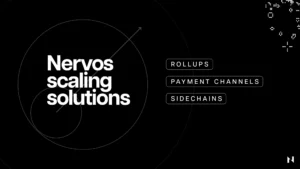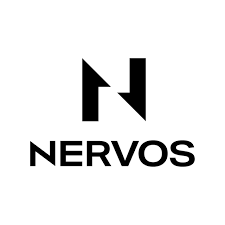Latest News
- Binance Market Update: Crypto Market Trends | February 28, 2025
- What do you think about UTXO Stack? (BTC Liquidity Staking Protocol + Stablecoin on Lightning Network)
- Altcoin picks- need advice
- CKB Nervos Network: The Next Top 10 Coin
Current Price
The current price of CKB is $0.00454
Introduction
Nervos Network (CKB) has emerged as a significant player in the blockchain space, offering a multi-layered framework that addresses critical issues such as scalability and interoperability. With its distinctive architecture and dual-token system, it aims to foster efficient resource management while ensuring security through an innovative Proof-of-Work mechanism.
However, despite its advancements, Nervos faces notable challenges that could impact its future growth. Understanding these dynamics is essential for evaluating its potential role in the ever-evolving blockchain landscape. What implications do these factors hold for its long-term viability?
Quick Overview
- Nervos Network employs a multi-layered architecture, separating transaction execution and consensus for improved scalability and throughput.
- The Common Knowledge Base (CKB) serves as the layer-1 blockchain, supporting diverse programming languages for smart contract development.
- A unique dual-token system incentivizes resource allocation and user participation, fostering a thriving ecosystem for decentralized applications (dApps).
- Despite its advantages, Nervos faces challenges like potential scalability issues during peak traffic and competition from established blockchain platforms.
- Future developments focus on enhancing transaction throughput through Layer 2 solutions and forming strategic partnerships to diversify use cases.
Overview of Nervos Network
Nervos Network frequently positions itself as a multi-layered blockchain ecosystem designed to address the scalability, interoperability, and sustainability challenges faced by traditional blockchain platforms. At its core is the Common Knowledge Base (CKB), which operates as a layer-1 blockchain, providing a foundational layer for decentralized applications (dApps) and smart contracts.
CKB utilizes a novel Proof-of-Work (PoW) consensus mechanism that emphasizes security while enabling the storage of state and value across multiple layers, thereby facilitating efficient resource management.
The architecture of Nervos Network is uniquely structured, consisting of a layer-1 base layer and layer-2 solutions. This design allows for the separation of transaction execution and consensus, optimizing both scalability and throughput.
Moreover, Nervos employs a unique model of economic incentives that encourages developers to build on the platform while ensuring that the value of the network is preserved over time.
Interoperability is another key aspect, as Nervos Network is designed to interact seamlessly with other blockchain ecosystems, allowing assets and data to flow freely.
This strategic positioning aims to create a robust infrastructure that supports a wide range of decentralized applications, ultimately fostering innovation within the blockchain space.

Key Features of CKB
A standout feature of the Common Knowledge Base (CKB) is its innovative approach to resource management through a unique economic model. The CKB operates on a dual-token system comprising CKB tokens and a secondary token, which facilitates the allocation of resources and incentivizes participation in the network. This structure enables users to store both state and data, accommodating diverse application requirements without compromising scalability.
Another remarkable characteristic of CKB is its support for multiple programming languages, leveraging the Layer 1 architecture to allow developers to create smart contracts in familiar languages such as Rust and Solidity. This enhances accessibility and reduces the barriers to entry for developers making the shift to blockchain technology.
Moreover, CKB employs a novel consensus mechanism known as the Nakamoto Consensus, combined with a Proof of Work (PoW) model to guarantee security and decentralization. This mechanism underpins the integrity of the network while enabling rapid transaction validation.
Advantages of Nervos Network
The Nervos Network offers several advantages that position it as a compelling choice for developers and users alike. Its unique architecture and features enable enhanced usability, security, and scalability, making it a robust platform for decentralized applications (dApps).
Key advantages include:
- Layered Architecture: Nervos employs a multi-layered design, separating the consensus and application layers. This allows for greater flexibility and scalability, accommodating various transaction types without compromising network performance.
- Interoperability: The Nervos Network is designed to facilitate seamless interaction between different blockchains. This interoperability not only enhances the utility of dApps but also fosters a thriving ecosystem by enabling cross-chain functionalities.
- Economic Model: The network utilizes a unique economic structure that incentivizes both developers and users. Through its native token, CKB, users can secure their assets while developers are rewarded for building on the platform, consequently promoting long-term growth and sustainability.
Challenges and Limitations
While the Nervos Network presents a range of advantages, it is not without its challenges and limitations that warrant careful consideration.
One notable challenge is its scalability. Although Nervos employs a layered architecture aimed at enhancing throughput, the foundational layer (CKB) can experience congestion during high-traffic periods, which may hinder transaction speeds and overall user experience.
Additionally, the complexity of its architecture can pose a barrier to entry for developers. The unique consensus mechanism, which combines Proof of Work with a distinctive layer for smart contracts, requires a deeper understanding of both layers, potentially complicating the development process. This may limit the ecosystem’s growth as developers may prefer simpler platforms.
Moreover, the reliance on the native token, CKB, for transaction fees and smart contract operations raises concerns about volatility, as price fluctuations can affect transaction costs and deter user engagement.
Ultimately, the competition from more established blockchain platforms with robust ecosystems can impede Nervos’s adoption and market penetration, despite its innovative approach.
Future Prospects and Developments
Looking ahead, Nervos Network is poised to continue its evolution by addressing existing challenges and harnessing emerging opportunities within the blockchain landscape.
The platform’s multi-layer architecture and focus on interoperability position it favorably in an increasingly fragmented ecosystem. Anticipated developments include enhancements in scalability, partnerships with key industry players, and innovative governance mechanisms.
Key future prospects for Nervos Network include:
- Scalability Solutions: Continued research into Layer 2 solutions will enhance transaction throughput, reducing latency and costs for users.
- Ecosystem Expansion: Strategic partnerships with decentralized finance (DeFi) projects and non-fungible token (NFT) platforms will diversify its use cases, attracting developers and users alike.
- Enhanced Security Protocols: Ongoing improvements in security measures will bolster user trust and facilitate enterprise adoption, addressing concerns that often hinder traditional entities from entering the blockchain space.

Frequently Asked Questions
What Is the Consensus Mechanism Used by Nervos Network?
The Nervos Network employs a unique consensus mechanism called Nakamoto Consensus, which integrates Proof of Work for security and a layered architecture to enhance scalability and interoperability, allowing for efficient transaction processing and decentralized application development.
How Can Developers Build on the Nervos Network?
Developers can build on the Nervos Network by utilizing its Layer 1 protocol, leveraging smart contracts, and integrating with the Common Knowledge Base (CKB) to create scalable decentralized applications that guarantee security and interoperability across platforms.
Is CKB Compatible With Other Blockchain Networks?
Interoperability is a critical feature for blockchain networks, and compatibility with other blockchains can facilitate asset transfers and data sharing. CKB employs protocols and bridges to enhance cross-chain interactions, promoting a cohesive multi-chain ecosystem.
What Wallets Support Storing CKB Tokens?
Several wallets support CKB token storage, including the official Nervos wallet, Neuron, and various third-party wallets like Ledger and MetaMask. Compatibility may vary based on updates, so users should verify the latest supported versions.
How Is the CKB Token Used Within the Nervos Ecosystem?
The CKB token functions as the native cryptocurrency within its ecosystem, facilitating transactions, incentivizing validators, and enabling smart contract execution. It also plays an essential role in governance and securing network resources for decentralized applications.
Wrapping Up
To summarize, Nervos Network (CKB) presents a robust multi-layered blockchain framework that addresses critical challenges in scalability, interoperability, and sustainability. Its innovative architecture, characterized by a dual-token system and a distinct Proof-of-Work consensus mechanism, enhances security and efficiency.
However, scalability issues during peak usage and competition from established platforms pose significant challenges. Continued evolution through strategic partnerships and Layer 2 solutions will be essential for Nervos Network to solidify its position within the increasingly competitive blockchain landscape.
